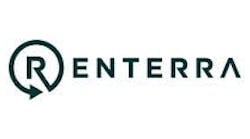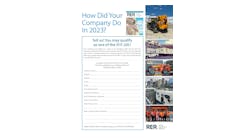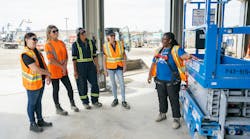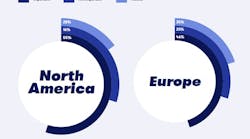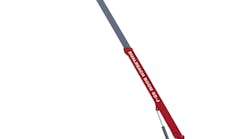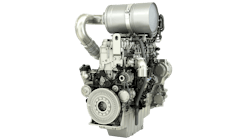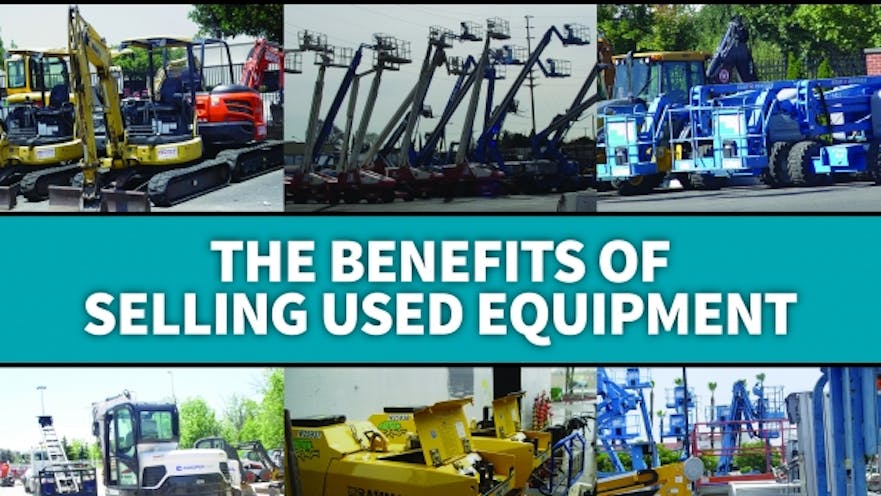Most of the products in your rental fleet are from manufacturers that are very dependent upon rental stores. Many of these OEM’s don’t have company-owned stores or strong dealer networks and need businesses like yours to gain access to the market. Many of these products are specialized “short lines,” meaning they have limited applications, or they have a price point that might seem too high to attract many buyers. Building a retail sales business around any of these short lines would be virtually impossible. However, these same products are perfect for the rental market.
Making these products available to a broad group of customers through a rental store can overcome most any price resistance or utilization argument. This is the reality of the rental industry -- the rental channel -- and why it plays such an important role in equipment distribution. The OEM gains access to the market without having to invest in storefronts and inventories. Customers have options to access specialized equipment without always having to outright purchase. Rental provides the customer with the convenience of sourcing the right machine, the right quantities, and have it delivered to the right location at the right time. Rental in a broader sense is also the services and logistics that support the products being rented. Rental can also play a major role in the introduction of new technologies and developing new markets.
The first mini-excavator in my fleet was 1978 and most of my customers were suspect about the machines and mocked them as “Tonka toys.” In those years, loader backhoes were popular, and no one was too concerned about working in tight spaces. We introduced mini-skid-steers in 2004 and although customers could more readily see the practicality, they couldn’t justify the price point. A full-sized skid-steer loader could be purchased for not too much more. In both cases, I believe the rental market was responsible for these machines becoming widely accepted. Rental is the fast lane to entering the market for most any construction product and is the “paid demo” or the “try before you buy.”
If we agree that rental stores clearly fulfill the short-term usage requirement along with new product introductions, should rental stores be further involved with product distribution? If you own a rental store, should you be engaged in the sales of new and used equipment? From a customer’s perspective do they expect you to also sell new and used machines? Are you missing sales opportunities, or should you be content with letting your customers find another supplier?
There is always a direct correlation between sales markets and rental markets. When there is a strong sales market it will also generate a vibrant rental demand. For every customer that can afford to buy a new machine, there is a greater group of customers that would be interested in buying a used unit. The largest group of customers are those that can’t justify purchasing these machines but are very comfortable renting.
I’ve witnessed this first-hand in international markets where the sales for loader backhoes was very strong, while the rental market was almost non-existent. When reliable rental fleets started to emerge, the backhoe rental market exploded. The rental market is somewhat like the wake of a boat following a strong sales engine.
A booming economy will often bring to the surface rental customers that would like to buy convenience. Having a pipeline of jobs and good cash flow, they like the idea of owning machines and not spending time chasing rental equipment. Smaller machines -- those less than $10,000 -- represent a price point that is often too small for financing and will probably be a cash or credit card purchase. The buying decision will be quick (most likely on the spot) if the customer likes the machine and the price seems reasonable. If this is their first purchase, they are likely to buy a good used machine if they can find one that they believe is a good value.
Thinking once again about the distribution of equipment, where can a contractor shop for quality small equipment? Where can they find a wide range of machines, both new and used? Where can they try before they buy? Who do they consider to be a trusted source for small machines in their local market?
Should we be selling equipment to our rental customers?
For decades the position of many independent rental stores has been “we do not sell our rental equipment.” The philosophy was to work the equipment until the cost of the repair was going to exceed the value of the machine, or they could no longer source parts. Back in the 1970s and the ’80s it was not uncommon to hear customers comment, “When are you ever going to buy a new one, you’ve probably paid for this machine multiple times?”
The rental operator’s common response was “We’re in the rental business and we don’t sell. It may look a little rough, but it runs good.” The customer was really making a statement about the age and condition of the machine they were renting. Their expectations were not being met.
Product design and functionality has been very slow to evolve in certain categories of construction equipment. From a business perspective, slow product evolution allows your fleet to be relevant for a longer period. Being insulated from rapid changes in technology has always been an attractive element of the rental business. Jackhammers from the 1970s look a lot like the ones today. Plate compactors are basically the same, trash pumps, hammer drills, lawn mowers, weed eaters, the list goes on and on. Rental industry pioneers knew if they took good care of their equipment, they could still earn strong revenues long after the machines were paid for. These machines were commonly known as the “cash cows” in the fleet. Items that are fully depreciated are no longer on the books and earning revenue…rental is a great business!
Unfortunately, cash cows don’t live forever. The time will come when the cost to repair will be disproportionate to market value and scrapping the machine becomes the only option. Often you can get some salvage value through cannibalizing the parts, and hopefully extend the life of another cash cow. Historically rental owners have not had the means to recognize an optimum selling time for their machines. From a business perspective, the sale of used equipment was not a forecast revenue stream.
Most small rental operators consider Return on Investment (ROI) a calculation of net gain on rental revenues, less maintenance and ownership costs. They fail to consider any profits made through the sale of the used machine. Over the last 20 years our industry has become much more sophisticated in virtually every dimension. Industry consolidation has been a major driver in developing fleet management strategies to maximize operating profits. These strategies include achieving efficiencies in time-out utilization and controlling maintenance and repair costs.
Market conditions dictate and create opportunities
Increased competition, sophisticated customers, new technology -- changes are coming faster than ever before. How does this impact the average rental store? Depending on what market you are trying to attract, and the sophistication of your competition, you might be able to still get away with having older machines. You might still have a few “cash cows.” Market leaders are forcing the issue with newer machines and educating your customers that there are better options, newer, faster, and better functionality than what you offer. The customer will soon recognize that you’re not reinvesting in your fleet fast enough. They do not expect to get a 10-year old machine when they can get a much newer machine for a similar price. Does the condition of your fleet align with how a progressive contractor might want to be seen on a jobsite?
Fleet age is a factor
How important is the average age of your rental fleet? Market leaders routinely report their average fleet age at approximately 46 months, or even younger in some cases. This measurement says a lot about a rental operation. Besides being an indicator of how fast they turn over their fleet, it also indicates their focus on controlling maintenance costs and minimizing down time.
All things being equal, such as the size of company, the fleet mix and the location, a lower average fleet age should translate into competitive advantage. Monitoring the fleet age also suggests a strategy for roll-out and replacement. If you were trying to sell your business and your average fleet age was 72 months, the prospective buyer could discount your sales price because they need to anticipate considerably more additional fleet investment just to maintain the current revenue stream.
Competition and rapid advancement in machine technology is putting the squeeze on the idea of creating any more cash cows. In today’s market, especially with the shortage of technicians, the practice of hanging on to machines too long will show up in your missed rental log as machine not available – in repair. It can also be found when rental charges are discounted because the customer had issues with the way the equipment performed. When you can no longer source parts for a specific machine, you’ve waited too long to sell. Every rental operator needs to have a well thought out plan for refreshing their rental fleet. This will allow you to be more fluid in your decision-making when faced with the opportunity to sell.
EXAMPLE: Rental fleet of $3,000,000 original cost, and you want the average age of the fleet to be five years. That means an annual replacement plan of $300,000. Breaking this down further, you will need to average selling $25,000 (original cost) of rental equipment every month for 10 years. Aspiring to an average age of four years requires you to replace $375,000 per year and sell off more than $30,000 per month. For the average rental store, to consistently sell this value of equipment won’t happen by mere chance.
Mature rental companies can generate approximately 20 percent of their total revenues through equipment sales. Based on the example above, this would mean an additional $600,000 of revenues with an expected gross profit margin of between 25 percent and 45 percent. Conservatively this would add an additional $150,000 of profit.
To sell or not to sell
When responding to a customer’s request to buy a rental machine, you should be open to the opportunity until you can review the rental history. Making the decision to sell should not only include review of the specific unit, but the other units within the same class. After you can answer the following questions, then you can determine whether this is the machine to sell, or maybe there is another unit that would be better.
- How has this machine performed overall – income / expenses
- Compared to the other units within the same group, should this be the one to sell?
- Is the time-out utilization trending in the right way?
- Are the maintenance costs steady or is the machine becoming more problematic?
- If you decide to sell this unit, what is the opportunity cost until you get a replacement?
- Is this machine current technology or is it outdated?
- Is the customer going to expect you to maintain this machine in the future?
Once you have decided to sell a unit, then determining the sales price is next. Answering the following questions should help you arrive at a reasonable selling price.
- What can the customer purchase a new machine for? Not the Manufacturer’s Suggested Retail Price, but an actual transaction price. Easy to find this through an on-line search.
- Is this a real specialty machine that might command a higher used price because of low availability?
- Overall age and condition of the machine, does it have a new engine, tires, tracks, etc. that might add additional value?
- On a scale of 1-10, should this machine command the high side of the market price or somewhere in the middle?
- What’s a new replacement machine going to cost, including freight charges?
- What rental opportunities are you going to miss before you can get a replacement?
- Does the machine still have any finance balance still owed? Although this has nothing to do with market pricing, you don’t want to sell something for less than you owe, unless you have no other options.
New machine sales, is it worth the effort?
Benefits can include overall better acquisition prices and leveraged freight costs for your rental fleet. The downside with selling new equipment is you are selling against the internet in many cases. Customers can search on-line and quickly become knowledgeable about the price they should pay. You need to ask yourself the following questions:
- Is this a product line that you can source easily and have a reliable vendor?
- Will selling this product get you more business (rental) from this customer?
- Is this a product you feel comfortable supporting (parts and service as required)?
- Depending on the sales price, what is the timing for payment from the customer and your payment terms to the supplier?
- Are you going to have to put cash at risk until you receive payment from the customer?
- What type of gross profit margin should you expect? For smaller equipment our target should be minimum 15 percent.
- Where else can the customer possibly buy this item?
- Can you be competitive through your sourcing when you consider any freight charges, any labor costs associated with putting the equipment together, along with the use of your time and money.
Final thoughts
Changing market conditions require you to constantly evaluate your business model to maintain profitability and relevancy especially in the eyes of your customers. Are you keeping pace with trends within the rental market? Do your customers consider you to be progressive in the rental market or clinging to the past? Is there an opportunity to provide additional products or services? Stay focused on the customers and listen intently to what they are saying…you just might find an opportunity!
Bio: Larry Kaye is a second-generation rental industry veteran and has had multiple businesses over his 35-year career. He has served on the ARA board of directors and currently is president of Script International which does consulting work for OEM’s, equipment dealers and rental stores.
